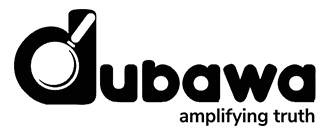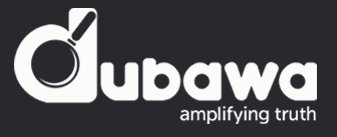Following President Muhammadu Buhari’s presentation of the N8.6 trillion ‘Budget of Consolidation’ in November to the National Assembly for approval and appropriation, Nigerians have criticised the government for again proposing an allocation to the education sector lower than 26 per cent of national budget ‘recommended’ by the United Nations Educational, Scientific and Cultural Organization, UNESCO.
By Azeezat Adedigba
Many Nigerians argue that the N605.8 billion budgeted for education which stands at 7.04 per cent of the total budget is far below expectation for a country with about 10.5 million out-of-school children, the world’s highest number.
Prominent in these voices is that of Barau Jibrin, the Chairman, Senate Committee on Tertiary Institutions and TETFUND, who faulted the abysmal allocation of funds to education contrary to the UNESCO standard.
Mr. Jibrin added that only N4 billion was spent (on education) in 2017.
MINISTER FAULTS ‘UNESCO’ CLAIM
Giving a breakdown of the budget for the sector, Minister of Education, Adamu, on November 14, while addressing journalists described as a lie, the common reference in reports that the UNESCO, set a benchmark percentage funding for the education sector in national budgets at 26 per cent.
Mr. Adamu said the UN agency ”told him recently that it never established the controversial benchmark.”
“Three weeks ago, I led the Nigerian delegation to UNESCO, and the issue came up, and UNESCO said they never, at any fora and UNDER any circumstances, ever suggested 26 per cent as the optimal level of funding for education for any nation. They said they just don’t know where this lie originated from and why. Therefore, there is not stipulation of 26 per cent for funding of education in the budget by UNESCO,” he said.
Meanwhile the Minister urged the President Muhammadu Buhari to invest about N1 trillion yearly in education for the nation’s interest.
Mr Adamu noted that since 1999 when democratic governance returned, the annual budgetary allocation to education in Nigeria has been between four per cent and 10 per cent.
“None of the E9 (Bangladesh, Brazil, China, Egypt, India, Indonesia, Mexico, Nigeria and Pakistan) or D8 countries (Bangladesh, Egypt, Nigeria, Indonesia, Iran, Malaysia, Pakistan, and Turkey) other than Nigeria, allocates less than 20 per cent of its annual budget to education. Indeed even among sub-Saharan Africa countries, we are trailing far behind smaller and less endowed nations in terms of our investment in education,” Mr. Adamu said.
Mr. Adamu also noted that the recent government retreat on education, which was attended by Nigerian ministers, ended by asking the president to increase revenue allocation to the education sector to about 15 per cent of the 2018 budget.
But how accurate is the statement that UNESCO set a (26 per cent) benchmark for education budgets for developing countries?
Aside the minister of education who said the 26 per cent allocation to education is a lie, the former executive secretary of the National Universities Commission, NUC, Peter Okebukola in an interview with the Guardian on January 14, 2015 also referred to the 26 per cent allocation to education as ‘mythical’.
Mr. Okebukola, who is also the president of Global University Network for Innovation, GUNI, Africa in the report said the recommendation arose out of a recommendation of a ‘localised’ UNESCO meeting which held in Nigeria sometime in the past.
“I have had to ask two Directors-General of UNESCO about this figure and they claim not to be aware of it For Nigeria, I believe we should strive for a minimum of 30 per cent for the next 20 years to clear the mess in the sector,” Mr. Okebukola said.
CHECKING FACTS
To authenticate the education minister’s claim and also ascertain if UNESCO made such a recommendation, PREMIUM TIMES contacted the UNESCO regional office in Abuja.
In its response, the spokespersons of UNESCO, Shola Macaulay and Alice Ateh-Abang, provided some documents titled ‘Education for All, EFA, 2000-2015: achievement and challenges’ and ‘World Education Forum 2015 final report’ for PREMIUM TIMES’ study.
Mrs. Ateh-Abang said the document established that there was a recommendation close to that effect, noting that, ”15 per cent to 20 per cent is the international benchmark.”
In the forward page of the EFA global monitoring report signed by the Director General of UNESCO, Irina Bokova, it says, “many governments have increased spending but few have prioritised education in national budget.”
The report, released for 2000-2015 tagged, a Dakar framework for action, called for significant increase in financial commitment by national governments and donors to the education sector to accelerate progress toward the EFA goals.
According to the document, the Dakar framework recommended governments to take lead in increasing financial commitments to EFA, with the EFA high level steering committee proposing that 15 per cent to 20 per cent of annual budgets be earmarked for education.
“In 2006, the High level Group on EFA proposed that governments should spend between 4 per cent and 6 per cent of GNP on education and that, within government budgets, between 15 per cent and 20 per cent should be earmarked for education”, Chapter 8, page 241 of the EFA report said.
The EFA document also indicates that at least 20 per cent of a nation’s national income must be raised in tax revenue for such countries to finance the Millennium Development Goals, MDGs, now Sustainable Development Goals, SDGs.
“Some countries including Afghanistan, Central African Republic, Nigeria and Pakistan collect 10 per cent or less of their national income in tax,” the report stated.
Similarly, the World Education Forum 2015 final report which is also referred to as ‘The lncheon Declaration’ in Chapter 4, page 26 titled, ‘Beyond the lncheon: rising up to the challenges of implementation’ said most governments fall short of allocating the recommended international benchmark of 20 per cent of public expenditure needed to bridge education funding gaps.
UNESCO initiated the EFA global monitoring reports to monitor progress, highlight remaining gaps and provide recommendation for the global sustainable development agenda to follow in 2015.
Meanwhile, Stephen Onyekwelu, a programme officer in UNESCO’s education sector told PREMIUM TIMES in an interview that UNESCO recommended that government should, ”at least allocate 15 to 20 per cent of their budgets to education.
“This should not generate controversies at all. It needs to be propagated so that people will not be in doubt. For someone to say that the minister went to the UN house and at the UN house, the UN representative told him there was nothing like that, it is an embarrassment to us. The former DG herself, Irina Bokova endorsed the recommendation,” Mr. Onyekwelu said.
According to him, UNESCO has had many references to this (recommendation) from ”eminent scholars in the universities and they (UNESCO) never rejected these references.”
“Timothy Odiaka, (used this) in his article in 2013, when he was talking about university budget and in his reference to the World bank, where 20 countries were used for study and how much they budgeted for education. If those references were not right, UNESCO would have rejected it. An organisation called Budgit information Technology Limited in Abuja also wrote a letter asking for clarification on the 26 per cent recommendation by UNESCO,” Mr Onyekwelu said.
“I am now telling you this. In 2006, a high level group under EFA met and recommended that 4 per cent to 6 per cent of the GDP or 15 per cent to 20 per cent of their (government) budget should be allocated to education. The authoritative source to confirm this recommendation for education is the EFA global report,” he said.
CONCLUSION
Based on the UNESCO’s official records from the EFA global report and World Education Forum 2015, Mr. Adamu’s claim that UNESCO ”NEVER made any recommendations let alone recommend 26 per cent” allocation of a country’s budget to education is not entirely true.
While the minister is right, going by the documents given to PREMIUM TIMES by the global body, that 26 per cent allocation was never recommended by UNESCO, he failed to give the accurate figure (15-20 per cent) in his submission.
However, the EFA document has confirmed as inaccurate the pervasive ‘claim’ that UNESCO set a 26 per cent benchmark. The recommendation it actually gave is 15-20 per cent; far higher than the 7 per cent proposed in Nigeria’s 2018 budget.
Notwithstanding the revelation, the appeals by the participants during the last education retreat to the president to allocate up to 15 per cent of the 2018 budgetary allocation to education is apt and similar to the UNESCO recommendation.


